4.3 Harmonic Progression, Functional Harmony, and Cadences
5 min read•november 2, 2020
Mickey Hansen
AP Music Theory 🎶
72 resourcesSee Units
4.3: Harmonic Progression, Functional Harmony, and Cadences
For the AP® test, all of our work with harmony will assume that our music is tonal.
What does it mean for music to be tonal? All pitch content is organized around a central pitch that we call the tonic.

It might sound complicated, but all it means is that your tonic note is a focal point to the music. Usually, it's also the end "goal" for the melody. All the other pitches function in relation to that tonic pitch. For example, B-flat major and B-flat minor both share B-flat as the tonic pitch, but the other pitches in relation to the tonic are different (major vs. minor scale).
Tonality got really popular in music right around 1650—and it's still a big hit with modern pop artists. Western classical music veered away from tonality for a while around 1900, but tonal organization is still central to other genres such as folk and jazz.

Remember when we learned that each diatonic pitch and chord has a name? <hyperlink to unit 3.2> These diatonic chords usually occur in a predictable sequence called a harmonic progression that provides structure to the music.

Harmonic progressions can be described in writing using Roman numerals with appropriate markings for inversions <hyperlink to unit 3.3>. The pace at which these harmonies change is called harmonic rhythm.
Harmonic progressions give music a sense of direction and help it arrive at a harmonic goal. In tonal music, this goal is the tonic, which is built on the first degree of the scale for the key. For example, in the key of E major, the tonic would be an E major chord. The tonic chord is labeled with the Roman numeral I.

All other diatonic chords play a role in helping music arrive at the tonic. There are two main functions that these chords can have: dominant and predominant.
Chords that have a dominant function usually immediately precede the tonic, and movement from a dominant chord to a tonic chord often creates a feeling of resolution. There are two chords that typically have a dominant function: the V and the vii.
(Note: even in a minor key, dominant chords will only be V and vii, not v or VII.)
We are in the key of Bb Major:
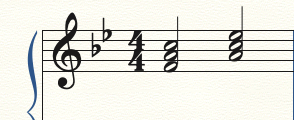
The V chord has scale degrees 5, 7, and 2, and the vii chord has scale degrees 7, 2, and 4. Scale degrees 7 and 2 can both resolve to the strong tonic note (scale degree 1) by a step, so we call them tendency tones. Scale degree 7 is a leading tone, so that tendency is even stronger.
The V chord is a stronger dominant than the vii chord because of a physics phenomenon called overtones. You won't need to know this for the AP exam, but you will need to know that scale degree 5 wants to resolve to scale degree 1, which also makes the V chord want to resolve to the I chord.
The V chord also resolves to the I chord especially well because it shares a pitch. The root of a V chord is the fifth of a I chord, so the voice leading from V to I is often very smooth and aesthetically appealing.

Predominant chords usually appear—you guessed it—before dominant chords. Lots of different chords can serve a predominant function in different cases, and they're a bit more complicated than dominant chords. We'll learn more about these in Unit 5. <hyperlink to unit 5.1> For now, though, it's useful to know that IV and ii chords often act as predominant chords.
The most basic harmonic progression in the CPP is tonic-dominant-tonic. Usually, this looks like I-V-I or i-V-i (depending on whether you're in a major or minor key).
Take the Happy Birthday song, for instance.

The harmonic progression over each phrase is I-V-V-I-IV-V-I. Since some of these are repeated, you could also simplify it to I-V-I-IV-V-I. In one case, the predominant briefly sets up the dominant, but the song mostly alternates between I and V.
This is super common across tonal music, and you'll find it in everything from Bach to Taylor Swift.

In the wild west of music, you'll find tonal music with lots of different harmonic progressions, but most will be some variation of tonic-predominant-dominant-tonic. Movement in the opposite direction (for example, tonic to dominant or dominant to predominant) is called a retrogression.

At the end of a musical phrase, the harmonic progression is called a cadence. There are four main types of cadences: half cadence; deceptive; plagal; and authentic.
A half cadence occurs when a musical phrase ends on a V chord. Because the V chord has a dominant function, the half cadence usually feels unresolved or unfinished. Phrases that end in a half cadence sound a bit like a question, which is then answered by another phrase that ends with a stronger cadence.

A deceptive cadence has a V chord that sounds like it should resolve nicely to a I/i chord, but instead progresses to a different chord. In many cases, deceptive cadences move to a vi/VI chord or a IV/iv chord, but any non-tonic chord can end a deceptive cadence.
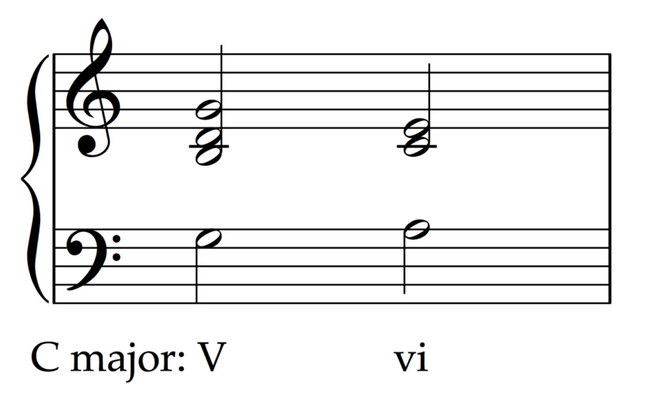
A plagal cadence (sometimes also called an "amen" cadence, since it is common in hymns) moves from the IV/iv chord to the tonic I chord. Although there is no dominant chord, plagal cadences are usually considered pretty strong resolutions.
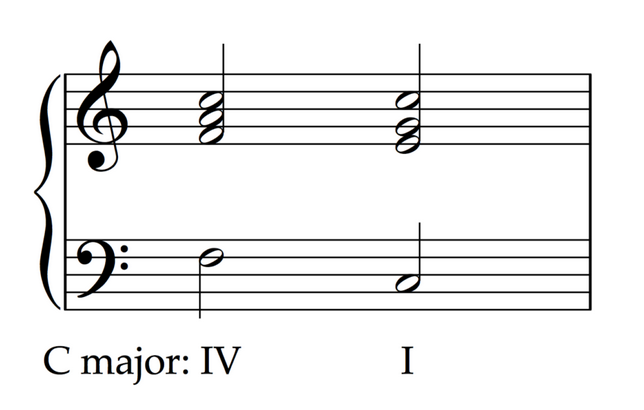
The authentic cadence comes in two forms: the perfect authentic cadence (PAC) and the imperfect authentic cadence (IAC). Both involve the dominant V chord (or dominant-functioning chord, such as a vii chord) resolving to the tonic I chord, but the PAC is stronger because both chords are in root position (where they are more stable), and the soprano voice ends on scale degree 1. If either the V chord or the I chord are inverted or if the soprano ends on a non-tonic pitch, then the cadence is an IAC.
Here is the Imperfect Authentic Cadence (IAC):
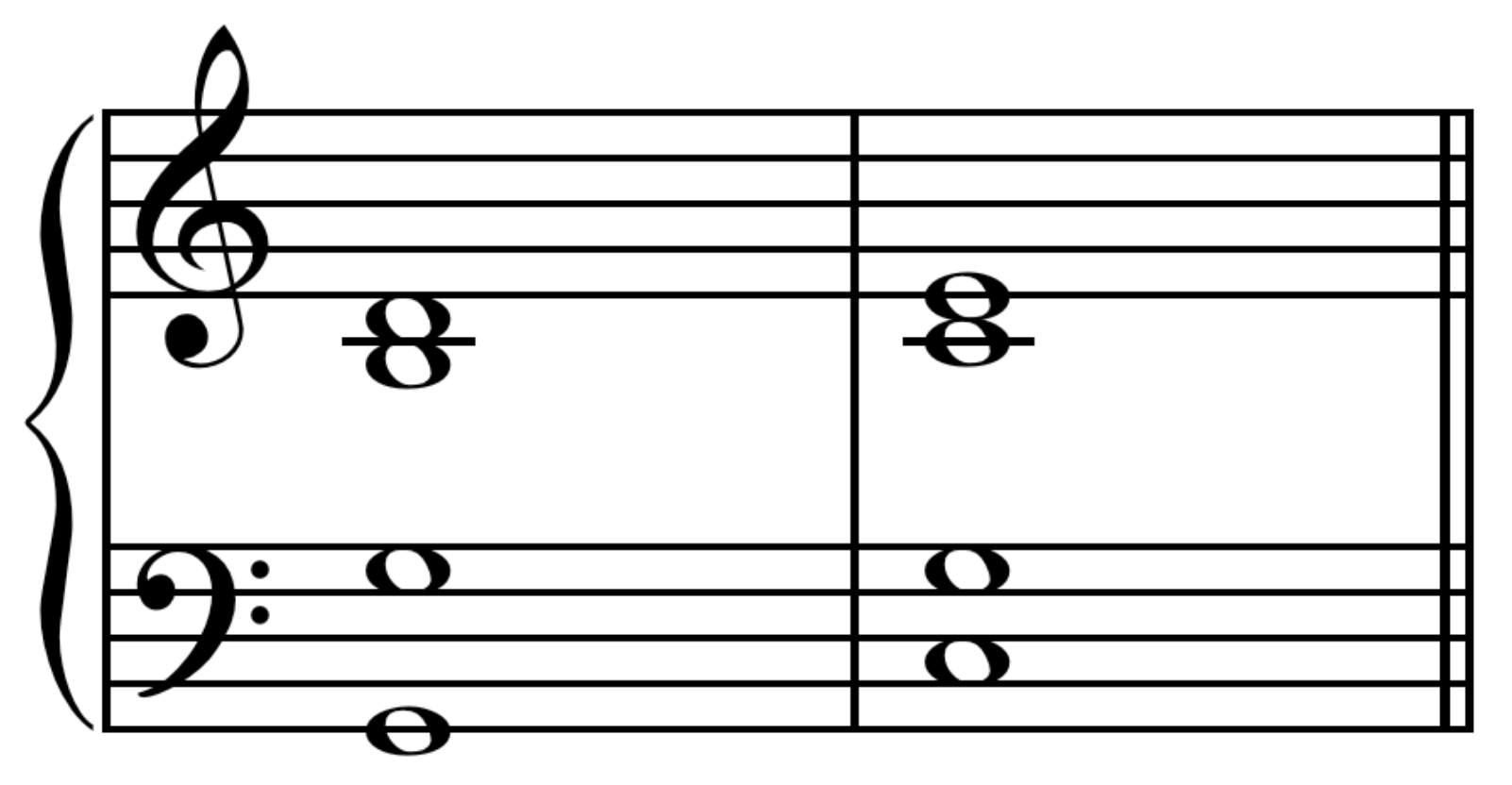
Here is a Perfect Authentic Cadence (PAC):
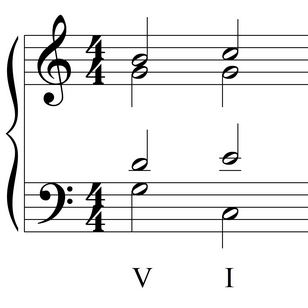
You can categorize these cadences as either conclusive or inconclusive based on their strength and finality. Inconclusive cadences are usually followed by more music, while conclusive cadences are often reserved for the end of a piece, movement, or other large music structure. Half, deceptive, and inauthentic perfect cadences are inconclusive, while plagal and perfect authentic cadences are conclusive.
Some cadences are so iconic that they have their own special name. The most common of these is the Picardy third, which is a V-I cadence (observe the major quality of the tonic chord) in a musical work that is in a minor key.

(Wikepedia Commons)
🦜 Polly wants a progress tracker: In Roman numerals, what are the four possible harmonic progressions that follow the tonic-dominant-tonic convention? (Hint: don't forget both major and minor!)
Browse Study Guides By Unit
🎵Unit 1 – Music Fundamentals I (Pitch, Major Scales and Key Signatures, Rhythm, Meter, and Expressive Elements)
🎶Unit 2 – Music Fundamentals II (Minor Scales and Key Signatures, Melody, Timbre, and Texture)
🎻Unit 3 – Music Fundamentals III (Triads and Seventh Chords)
🎹Unit 4 – Harmony and Voice Leading I (Chord Function, Cadence, and Phrase)
🎸Unit 5: Harmony and Voice Leading II: Chord Progressions and Predominant Function
🎤Unit 7 – Harmony and Voice Leading IV (Secondary Function)
📝Exam Skills
📆Big Reviews: Finals & Exam Prep

Fiveable
Resources
© 2023 Fiveable Inc. All rights reserved.